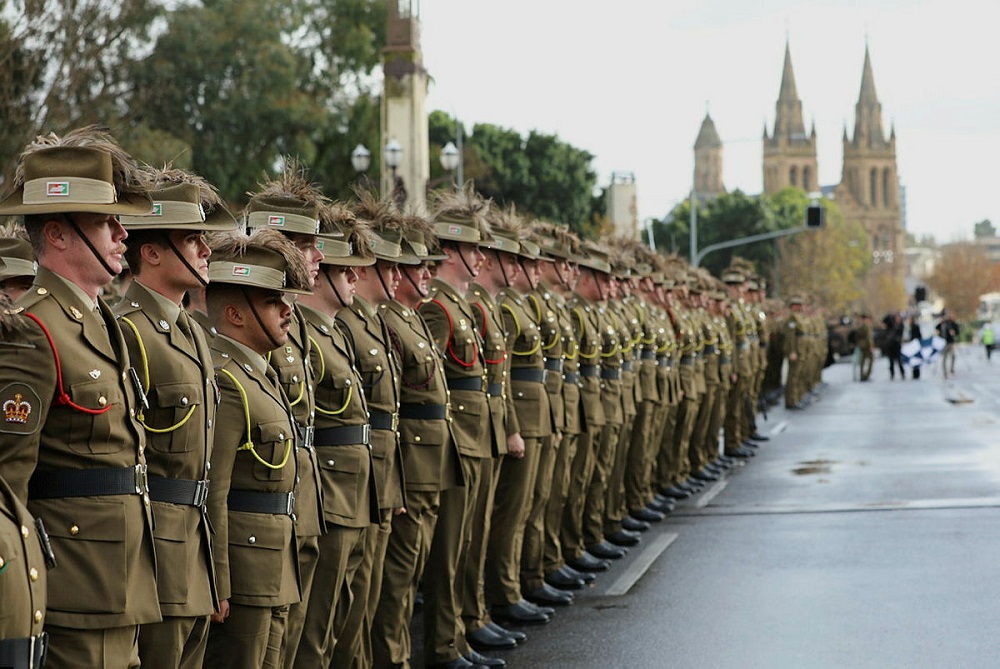
The defence strategic review brings into sharp focus the challenges faced by Australia with respect to strategic policy, defence planning and resourcing over the coming decades. Its discussion of recruitment and retention of personnel for the Defence Department and the Australian Defence Force adds weight to past efforts and reviews that aimed to create a blueprint for workforce development for at least the next 20 years. This attention is no mistake: arguably, there’s no greater limitation to Defence’s capability today than its workforce.
The review describes Defence’s workforce challenges as ‘acute’, ‘significant’ and ‘severe’. Of the three uniformed services, the challenges are most felt in the navy. But, broadly speaking, the ADF and Defence’s civilian workforce are ‘understrength’. Contractors, meanwhile, have become ‘the largest single component workforce element’.
While rebalancing the workforce make-up is a policy goal for government, the question then becomes, ‘How?’
The response will likely be multifaceted. It may include introducing initiatives to ensure that existing ADF personnel are utilised to achieve the greatest benefit and effect, re-engaging with skilled former ADF personnel to invite them back into the fold, and creating pipelines to attract and retain talent in the medium to long term.
It’s worth considering these potential responses in detail, but also with urgency.
Geostrategic circumstances have compressed the timeframe for securing an appropriately skilled defence workforce. But because it can’t be done overnight, creative approaches will be required to locate and assemble skilled personnel as soon as possible.
An immediate step should be identifying where uniformed personnel are best placed to focus their time and effort—within their respective services, within Defence as a whole or at large.
Defence will need to review how the uniformed workforce is allocated to determine the extent to which people are utilised on work that most closely matches their experience and skills. Also critical will be ensuring that there’s a balance that allows sufficient respite from operational postings. On the flipside, the review should identify where uniformed personnel spend time on work that could be performed by others.
Activities that don’t use the ADF workforce effectively may be those that are duplicated across the services. A shared internal function may be a solution for areas in which there’s a commonality or overlap in requirements; alternatively, it may be judged a candidate for outsourcing. Either way, some difficult conversations will likely be required. It will be tough to convince some groups to forgo the delivery of certain functions, particularly if it’s something they’ve done for a while.
However, given the findings of the review, it’s important that something changes.
Adopting a starting position that all workforce decisions should be made to utilise personnel to their greatest effect would be a significant step forward. By definition, that will mean personnel won’t always apportion their time the way they used to.
The appointment of Lieutenant General Natasha Fox as the ADF’s inaugural chief of personnel is the first step in this process of bringing together some of the personnel and career management functions that are duplicated across the services. The next step is to look at areas in Defence in which skills and therefore workforce can be further rationalised.
The review also recommends setting up a national support base to fill gaps in skills and capabilities. A positive for Defence is that this base already exists, albeit not in a formal program. Former ADF personnel already contribute to Defence’s capability through their involvement in defence industry and other support industries, and through their provision of technical and consulting services directly to Defence.
There are also many people with uniformed experience who work in the private sector and in the public service outside of Defence. Appealing to them to re-engage with Defence could be a realistic response to addressing critical skills shortages.
A strategy to engage ex-ADF personnel will need to be drawn up and acted upon. Again, it would be ideal for that work to start relatively quickly since it may take time to mature. Other nations already access their national support bases and considering their initiatives might be a good place to start.
Most importantly, re-engaging ex-ADF personnel must have broader goals than just getting them back in uniform. Ex-ADF personnel could undertake many roles that would provide significant value to Defence (training is one example). Their flexibility to move rapidly between roles without the constraints of the uniformed posting system should be used to optimal effect.
Defence will also need to build and maintain a talent pipeline that can help it—and Australia—meet the nation’s long-term strategic objectives.
Australia’s demography is changing, and that demands a change in mindset if the ADF is to remain representative. In addition, and more importantly, the motivators for the section of the population the ADF is most attracted to are changing, and the ADF’s pitch needs to change with them.

